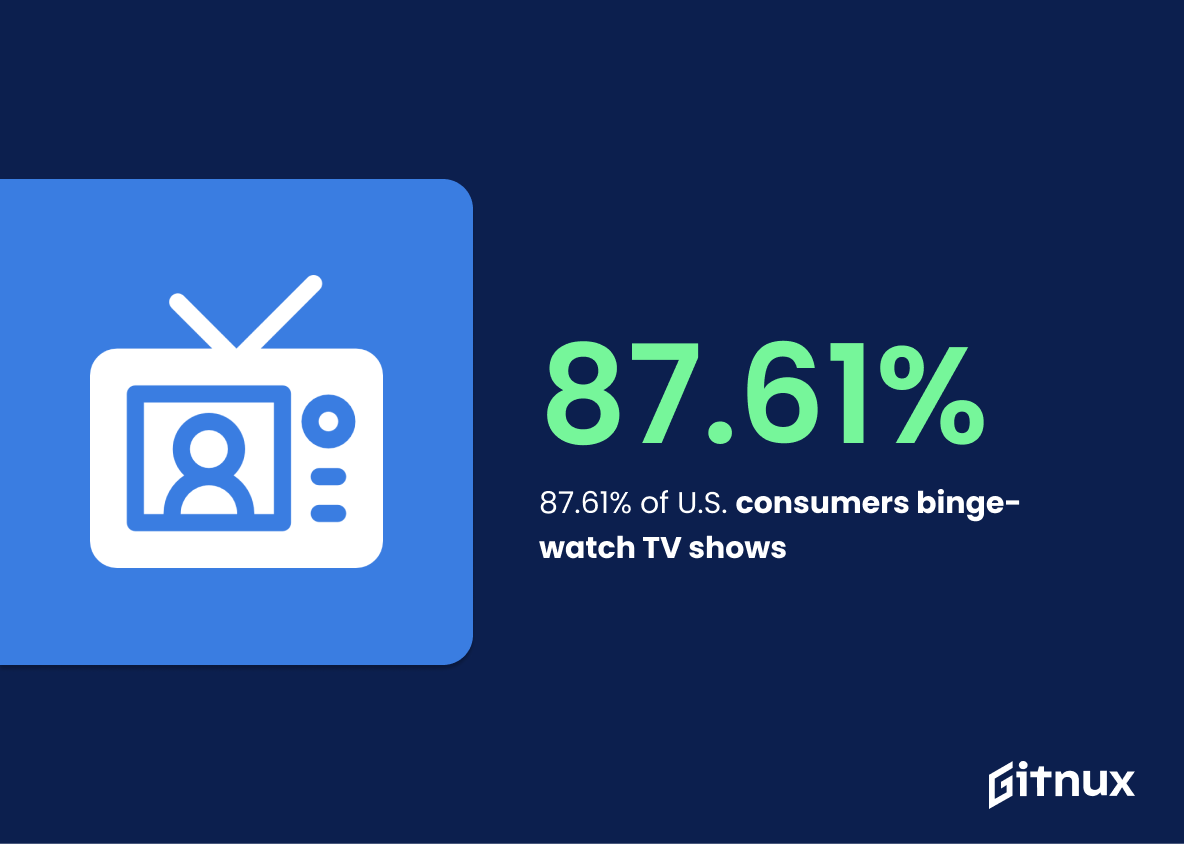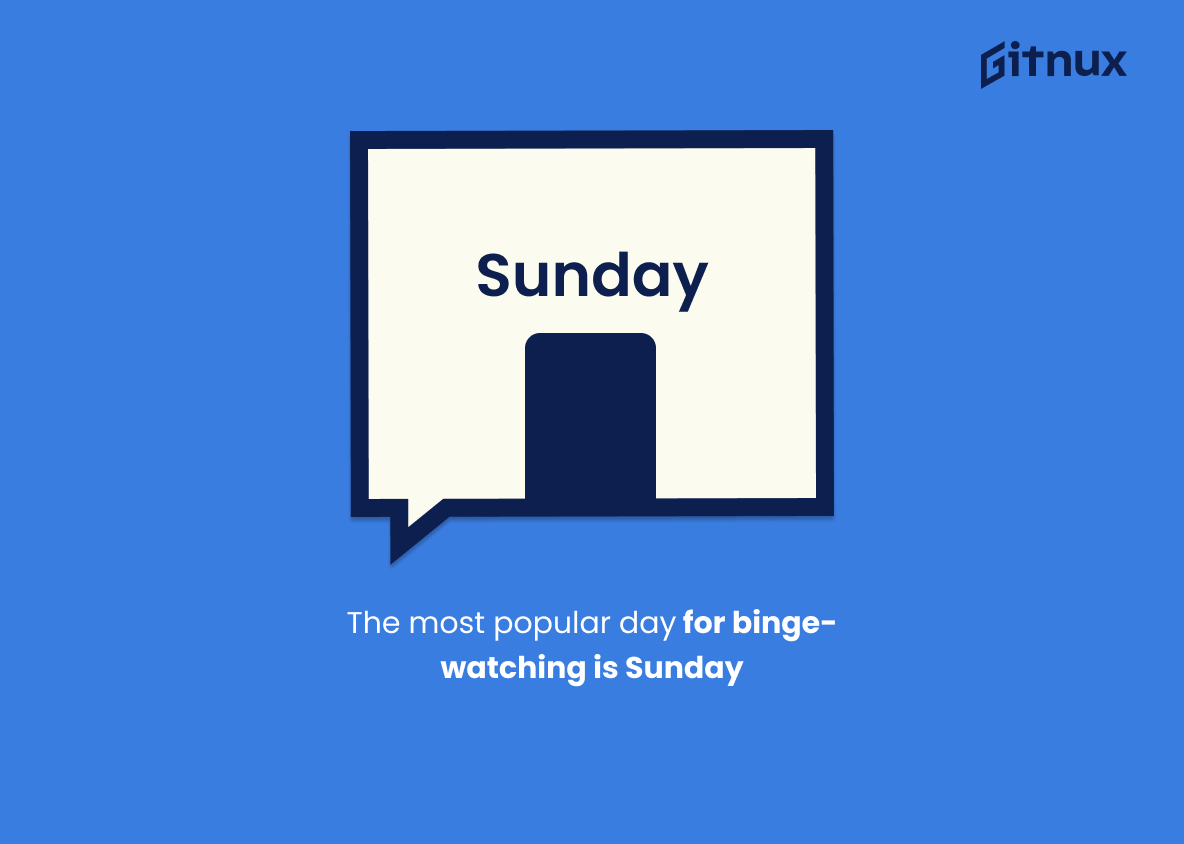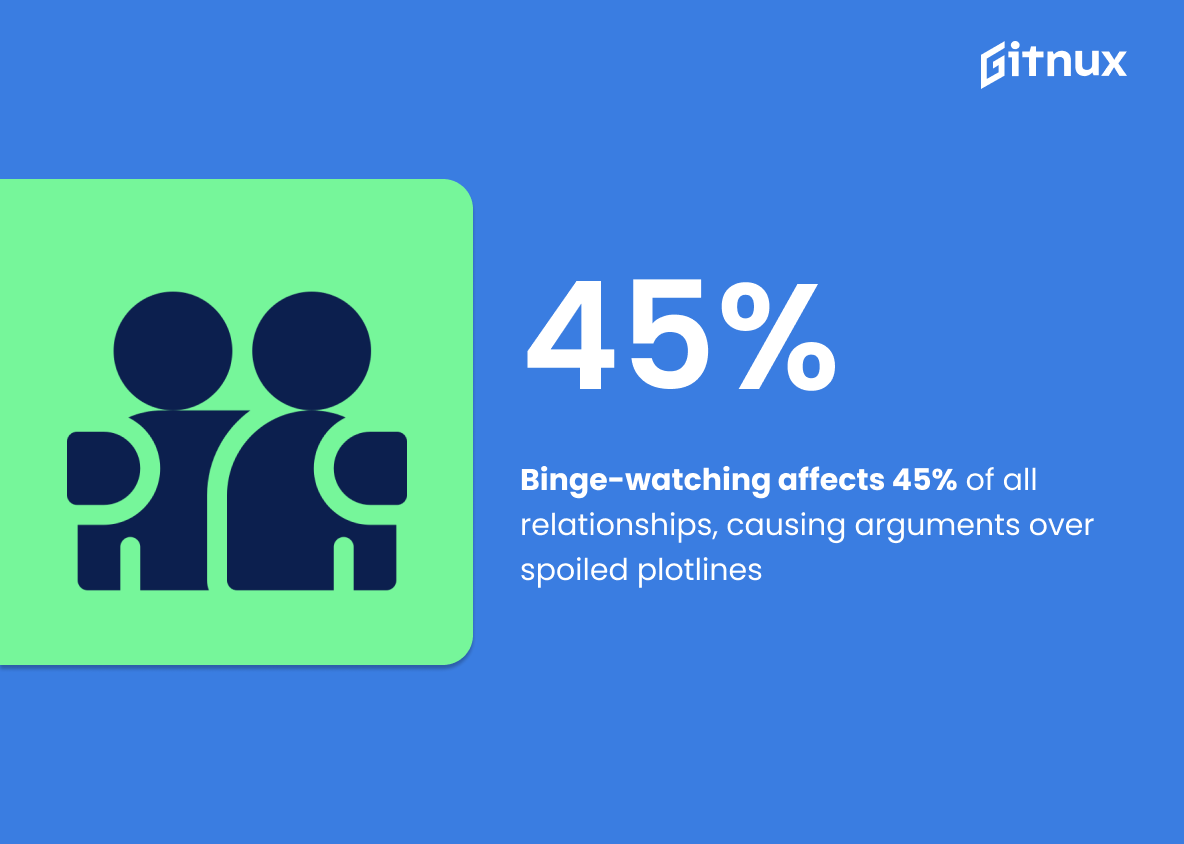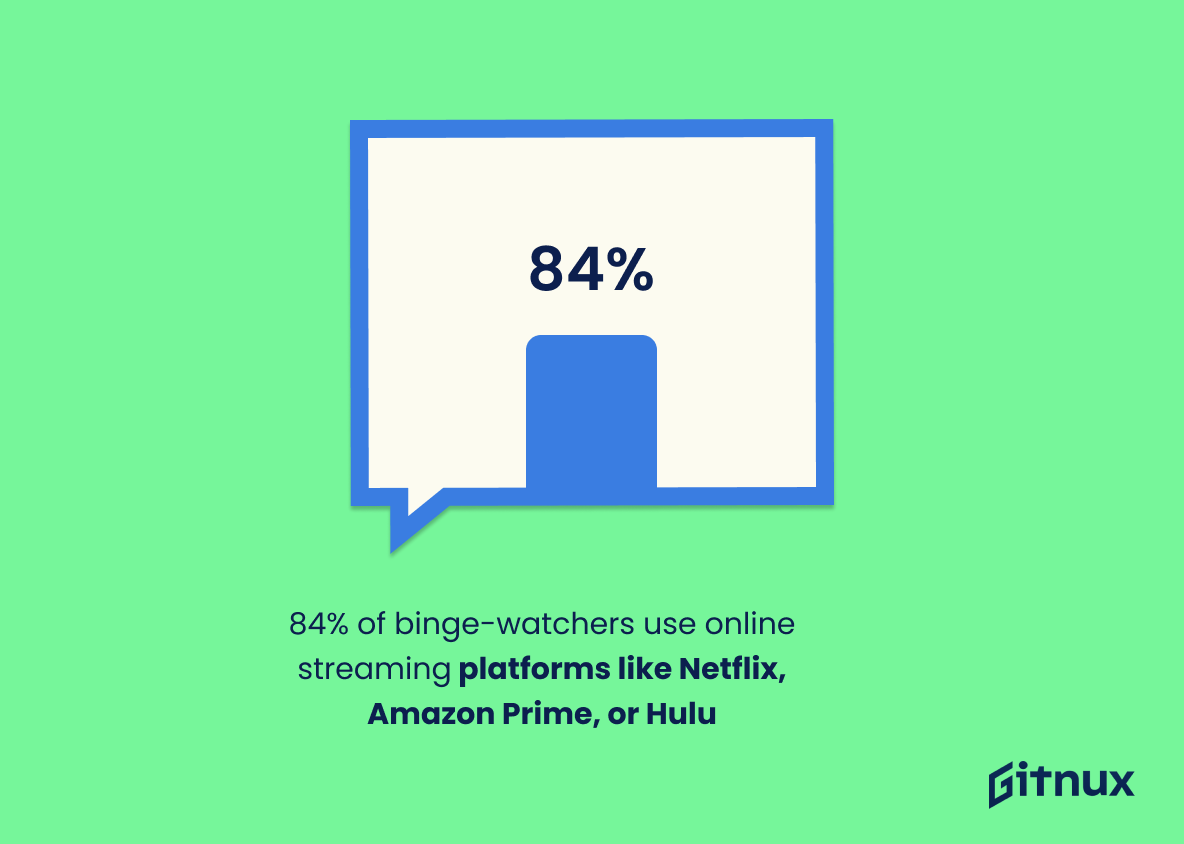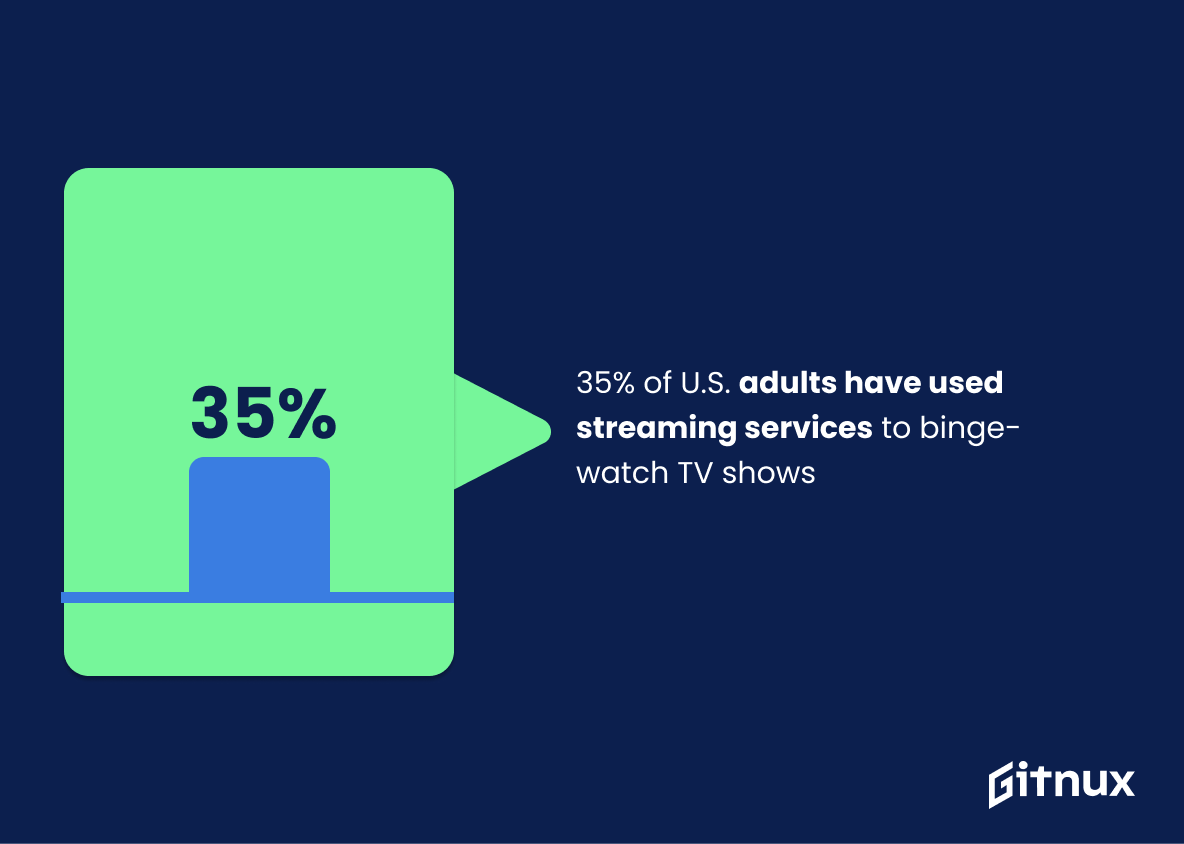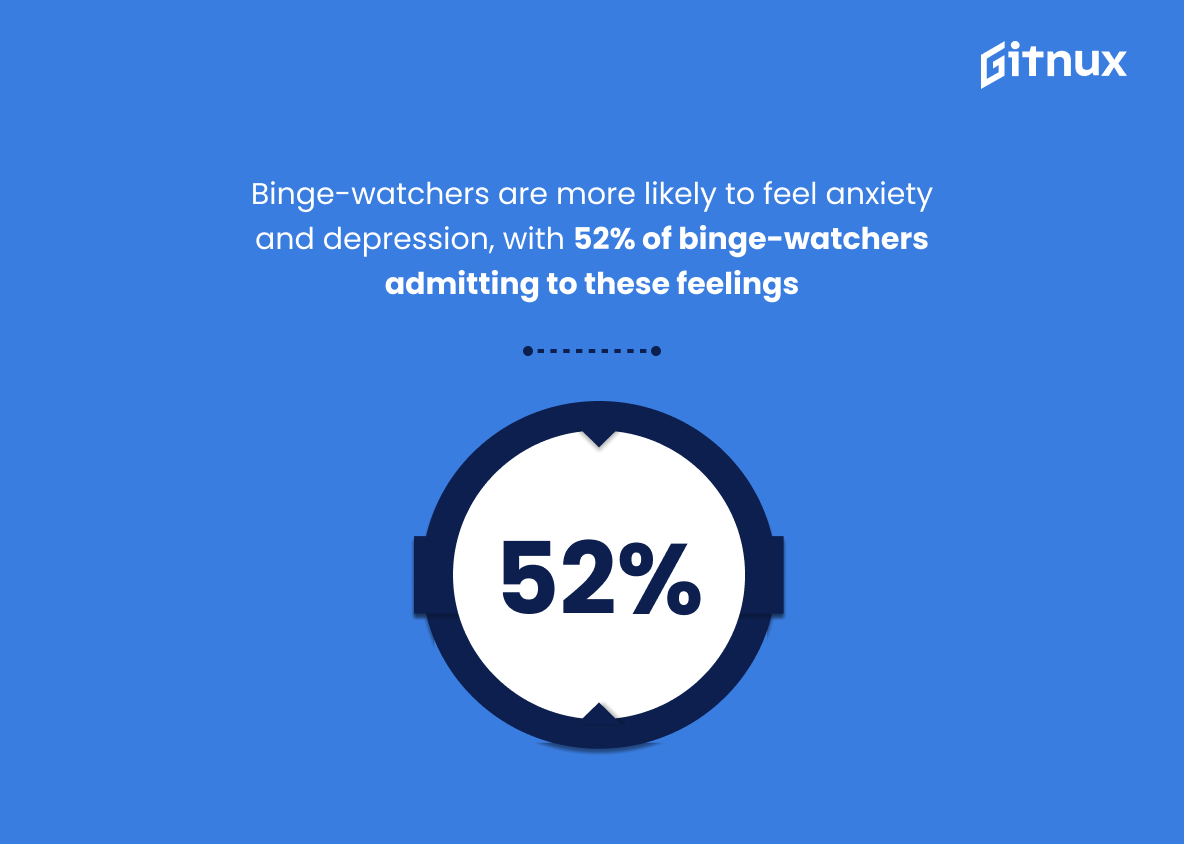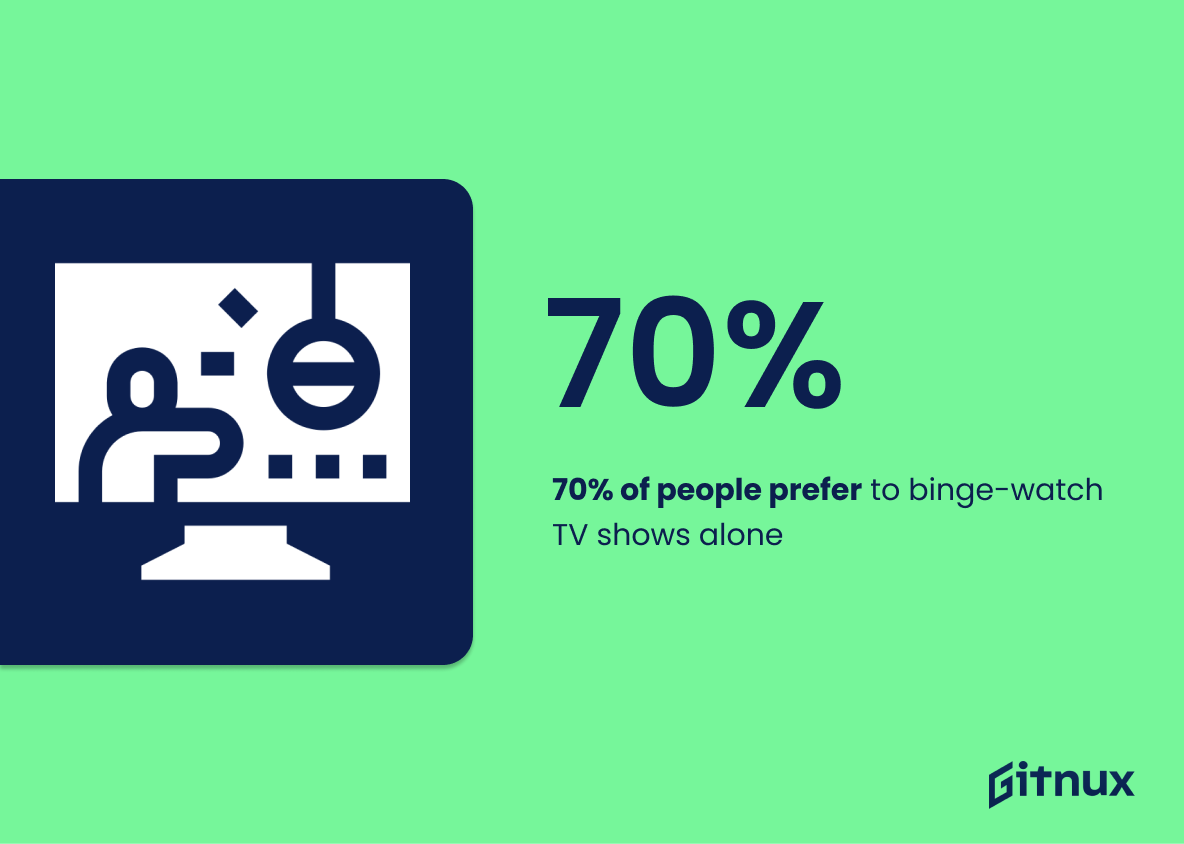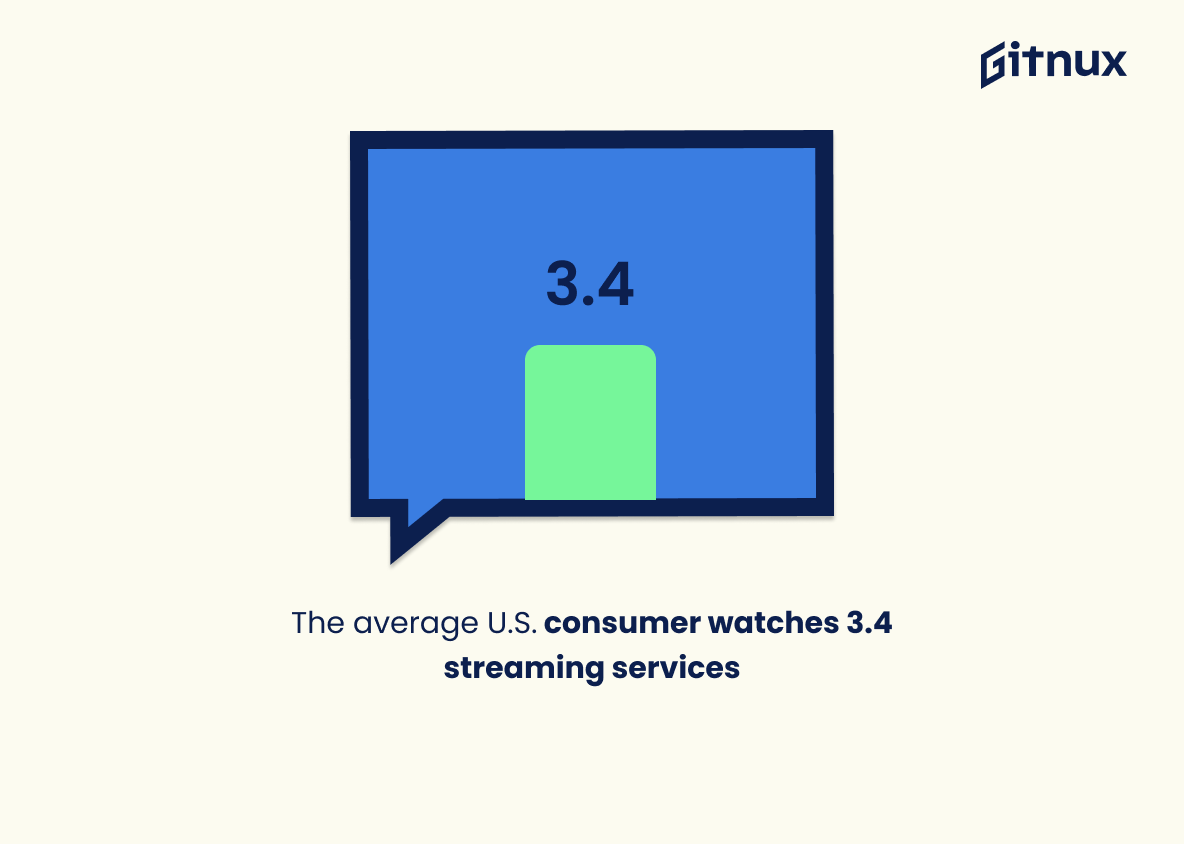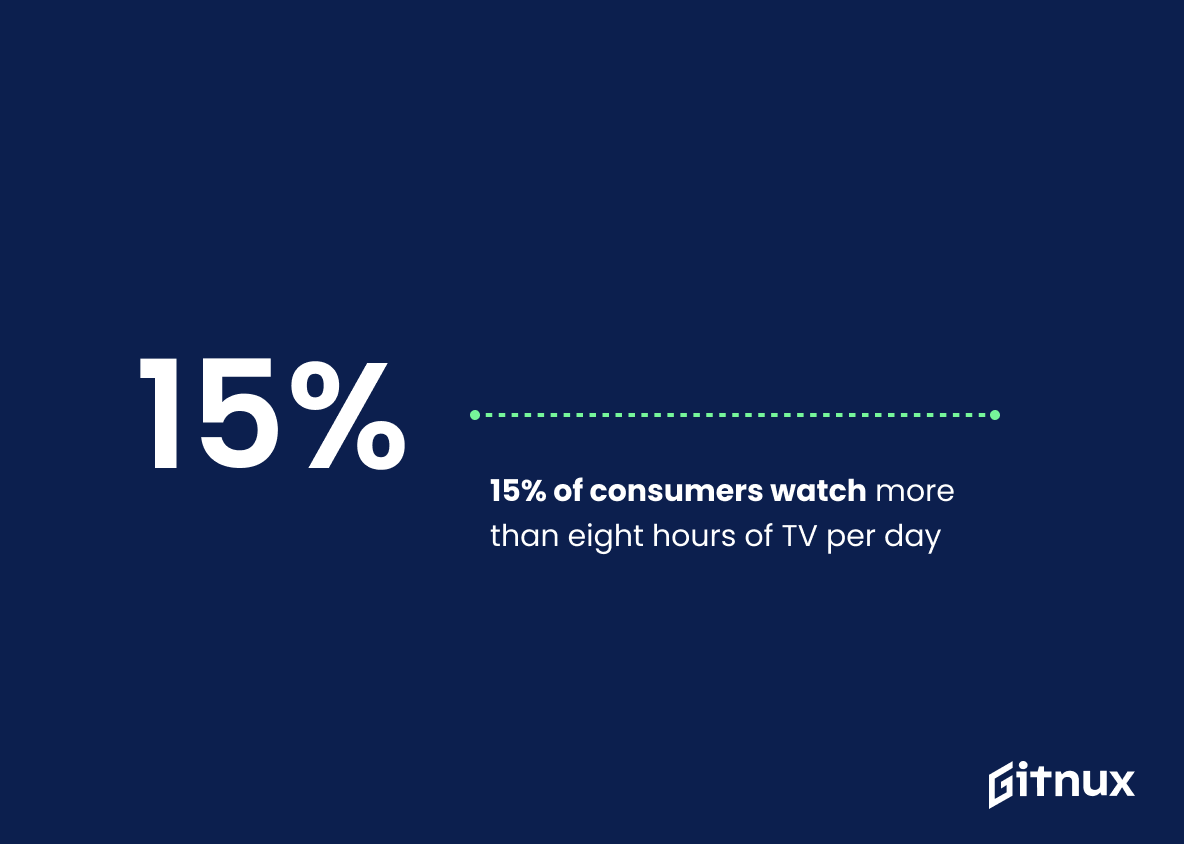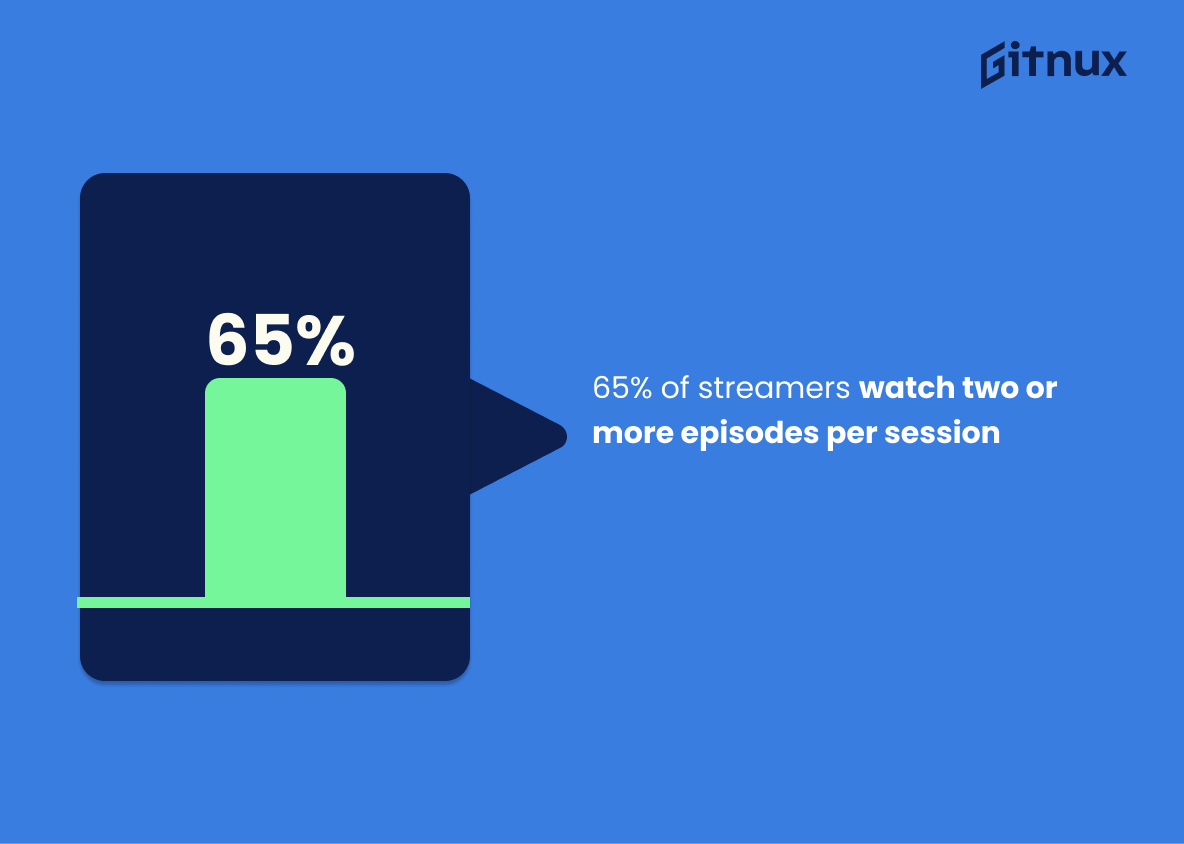Binge-watching has become a popular pastime for many people around the world. From streaming services like Netflix, Amazon Prime, and Hulu to prerecorded or downloaded content, there are plenty of ways to enjoy your favorite shows. But how much do we really know about binge-watching habits? This blog post will explore some interesting statistics on this topic that may surprise you. We’ll look at data from sources such as Limelight Networks, Broadband Choices UK, Recode Network, Statista Inc., Digital TV Europe and Reuters among others. Get ready to dive into the fascinating world of binge watching stats.
This statistic is a powerful indicator of the prevalence of binge-watching television shows among Americans. It demonstrates that a large majority of the population is engaging in this activity, which has become increasingly popular in recent years. This statistic is important to include in a blog post about Binge Watching Statistics as it provides a clear picture of the current state of binge-watching in the United States.
20% of binge-watchers watch between 5-10 episodes in a single sitting.
This statistic is a telling indication of the prevalence of binge-watching, as it shows that a significant portion of viewers are engaging in the activity to a large degree. It also speaks to the potential impact of binge-watching on viewers, as watching multiple episodes in a single sitting can be a time-consuming and potentially immersive experience. This statistic is thus an important piece of the puzzle when it comes to understanding the phenomenon of binge-watching.
Binge Watching Statistics Overview
87.61% of U.S. consumers binge-watch TV shows.
This statistic is a powerful indicator of the prevalence of binge-watching in the United States. It shows that the majority of consumers are engaging in this activity, which has become increasingly popular in recent years. This statistic is important to consider when discussing the impact of binge-watching on our culture and society, as it provides a clear indication of how widespread the practice has become.
The most popular day for binge-watching is Sunday.
This statistic is significant in the context of a blog post about Binge Watching Statistics because it reveals the day of the week when people are most likely to engage in this activity. Knowing this information can help viewers plan their own binge-watching sessions, as well as provide insight into the habits of the average binge-watcher.
45% of binge-watchers prefer watching shows weekly.
This statistic is significant in the context of a blog post about Binge Watching Statistics because it reveals that a large portion of binge-watchers still prefer to watch shows on a weekly basis. This indicates that, despite the rise of binge-watching, there is still a sizable audience that prefers to watch shows in a more traditional manner. This statistic can be used to further explore the differences between binge-watchers and traditional viewers, and how these differences may affect the way content is consumed.
Approximately 8.4 million people have “binge-raced” a series within 24 hours of its release on Netflix.
This statistic is a testament to the power of binge-watching. It shows that millions of people are taking advantage of the convenience of streaming services to watch entire series in one sitting. This speaks to the popularity of binge-watching and how it has become a part of our culture. It also shows that streaming services are providing viewers with the content they want, when they want it.
81% of binge-watchers stream their content on-demand, while 19% watch prerecorded or downloaded content.
This statistic is a crucial insight into the habits of binge-watchers, demonstrating that the majority of them prefer to stream their content on-demand. This information is essential for any blog post about Binge Watching Statistics, as it provides a clear indication of the current trends in the industry.
Binge-watching affects 45% of all relationships, causing arguments over spoiled plotlines.
This statistic is a stark reminder of the potential impact binge-watching can have on relationships. It highlights the fact that nearly half of all relationships are affected by binge-watching, with arguments over spoiled plotlines being a common consequence. This statistic serves as a warning to those who may be considering binge-watching, and a reminder to those already doing so to be mindful of the potential consequences.
84% of binge-watchers use online streaming platforms like Netflix, Amazon Prime, or Hulu.
This statistic is a powerful indicator of the prevalence of online streaming platforms in the binge-watching community. It speaks to the fact that the majority of binge-watchers are turning to digital services to access their favorite shows and movies, rather than traditional cable or satellite TV. This statistic is essential to understanding the current state of binge-watching and how it is evolving in the digital age.
61% of millennials think of TV shows as a social experience.
This statistic is significant in the context of a blog post about Binge Watching Statistics because it reveals the changing nature of how millennials view television. It suggests that millennials are increasingly viewing television as a shared experience, rather than a solitary one. This shift in attitude could have a major impact on the way television is consumed in the future, and could lead to new trends in the industry.
35% of U.S. adults have used streaming services to binge-watch TV shows.
This statistic is a telling indication of the prevalence of binge-watching in the United States. It shows that a significant portion of the population is engaging in this activity, which has become increasingly popular in recent years. This statistic is important to consider when discussing the impact of binge-watching on society, as it provides a snapshot of how many people are engaging in this activity.
Binge-watchers are more likely to feel anxiety and depression, with 52% of binge-watchers admitting to these feelings.
This statistic is a stark reminder of the potential mental health implications of binge-watching. It highlights the fact that binge-watching can have a negative impact on mental health, with over half of binge-watchers admitting to feeling anxiety and depression. This is an important statistic to consider when discussing the effects of binge-watching.
70% of people prefer to binge-watch TV shows alone.
This statistic is a telling indication of the current trend in television viewing habits. It speaks to the fact that more and more people are choosing to watch their favorite shows in one sitting, rather than over a period of time. This statistic is important to consider when discussing the impact of binge-watching on our culture, as it shows that the practice is becoming increasingly popular.
The average U.S. consumer watches 3.4 streaming services.
This statistic is a telling indication of the prevalence of binge watching in the U.S. consumer market. It shows that streaming services have become an integral part of the average American’s entertainment consumption, and that binge watching is a popular activity. This statistic is a valuable insight into the habits of U.S. consumers and provides a useful reference point for further discussion about binge watching.
15% of consumers watch more than eight hours of TV per day.
This statistic is a telling indication of the prevalence of binge watching in today’s society. It shows that a significant portion of consumers are dedicating a large portion of their day to watching television, which can have a major impact on their lifestyle and habits. This statistic is an important piece of information to consider when discussing the effects of binge watching on society.
65% of streamers watch two or more episodes per session.
This statistic is a telling indication of the prevalence of binge watching in the streaming world. It shows that the majority of streamers are engaging in the activity, suggesting that it is a popular and widespread phenomenon. This is an important piece of information for a blog post about binge watching statistics, as it provides a snapshot of the current state of streaming habits.
Conclusion
The statistics show that binge-watching is a popular activity among Americans, with 70% of people engaging in it. The average session lasts for 3 hours and 8 minutes, while 20% of viewers watch between 5-10 episodes at once. 87.61% of U.S consumers are reported to be binge-watchers, which has increased by 20% due to the COVID-19 pandemic; Sunday being the most popular day for this activity. 45% prefer watching shows weekly while 56 % stay up late to do so and 81 % stream their content on demand or prerecorded/downloaded content respectively . Approximately 8 million have “binge raced” a series within 24 hours of its release on Netflix and 61 percent millennials think TV shows as social experience whereas 35 percent US adults use streaming services for binging purpose . Binge watchers are more likely prone towards anxiety & depression (52%) , they mostly prefer doing it alone (70%), consume an average 3.4 streaming services per person & 15 percent watch more than eight hour daily Lastly 55& Gen Z prioritize exclusive original contents when choosing a service where 65percent view two or more episode per session All these facts indicate how much we love our favorite tv shows.
References
0. – https://www.media.netflix.com
1. – https://www.streamingmediaglobal.com
2. – https://www.researchgate.net
3. – https://www.statista.com
4. – https://www.pewresearch.org
5. – https://www.variety.com
6. – https://www.recode.net
7. – https://www.ncbi.nlm.nih.gov
8. – https://www.media-centric.com
9. – https://www.contentmarketinginstitute.com
10. – https://www.reuters.com
11. – https://www.nielsen.com
12. – https://www.marketingcharts.com
13. – https://www.warc.com
14. – https://www.limelight.com
